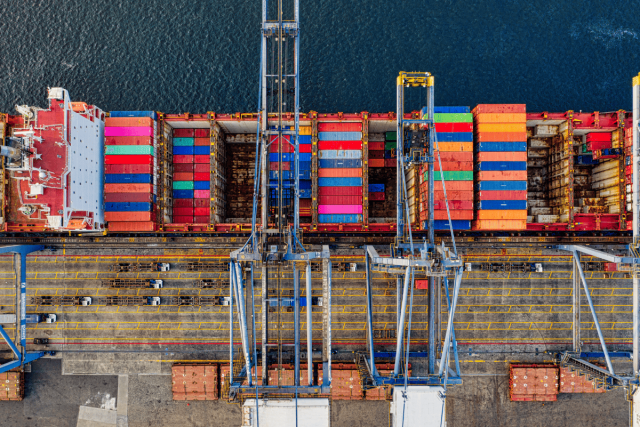Understanding the Role of Customs in Global Trade
In international trade, customs clearance is one of the most critical stages of import and export operations. Every shipment must comply with customs regulations before it can enter or leave a country. The process involves documentation, inspection, and payment of duties and taxes, all of which ensure that trade laws are upheld. For exporters and importers, working through complex regulatory frameworks can be daunting. However, modern ports—supported by digital systems and professional assistance such as port customs clearance services—have transformed what was once a cumbersome process into a streamlined operation.
The Transition from Physical to Electronic Customs Procedures
Earlier, customs clearance was labor-intensive, depending much on paperwork, and was a time-consuming process, usually leading to delays at the port. Currently, most ports have adopted digitization and automation. Electronic data interchange (EDI) systems enable importers, exporters, and customs agencies to exchange documents in a matter of seconds. This transformation has curtailed the time taken for document review and approval drastically. By effective port customs clearance processes, shippers are able to file shipping manifests, invoices, and certificates electronically, and the importers are provided with real-time status reports. Such innovations minimize errors and expedite the release of goods at a lower time and cost for companies.
Pre-Clearance and Advanced Screening Procedures
New customs agencies are increasingly using pre-clearance schemes that enable the inspection and approval of goods prior to their arrival at the port. Such proactive measures reduce bottlenecks and provide quicker turnaround times once cargo is received. Exporters are able to pre-submit paperwork, e.g., certificates of origin and packing lists, for checking ahead of time. Likewise, importers can prepay duties and validate product classifications prior to shipment. Port Customs Clearance professionals at ports such as those serviced by North Sea Agency are instrumental in coordinating these moves—ensuring that the products meet all specifications prior to dock arrival.
Integration with Global Supply Networks
Customs clearance is not in a silo. It’s integrated with international supply chain networks, trade databases, and port logistics systems. Advanced ports connect customs systems with worldwide trade networks so that data can be exchanged seamlessly across borders. This integration increases transparency, and customs authorities can track the origins of cargoes, verify trade documentation, and review compliance in real time. For importers and exporters, this interconnectivity means that port customs clearance procedures are made uniform, predictable, and transparent—lowering the likelihood of surprise inspections or fines.
Automation and Artificial Intelligence in Customs Processes
Automation and AI technologies are increasingly dominating customs clearance at contemporary ports. Automated risk management systems scan shipment information for potential red flags, enabling customs authorities to concentrate on high-risk shipments. Low-risk shipments, however, pass through expedited clearance channels. Artificial intelligence may also help validate documents, identify discrepancies, and forecast clearance times. Port customs clearance is made faster and more trustworthy by such tools, allowing smoother trade activities for small, medium, and large enterprises alike.
The Role of Customs Brokers and Port Agents
Although technology has made customs clearance easier in many respects, human expertise is still necessary. Customs clearing agents and port agents act as middlemen who make sure everything is done right when it comes to the paperwork, declarations, and duties. Companies that are not familiar with local trade procedures or regulations can be greatly helped by the services of a seasoned agent such as North Sea Agency. With knowledge of the local port operations, tariff codes, and inspection regimes, they are able to ensure that port customs clearance goes smoothly, avoiding the likelihood of shipment delays or violations.
Compliance and Security Features of Contemporary Ports
Contemporary ports are not only quicker but also better. Contemporary ports are more secure too. Sophisticated customs systems are equipped to reconcile trade facilitation with border security. X-ray scanning, RFID tracing, and container monitoring technologies identify unapproved or risky cargo while allowing legitimate shipments to flow more quickly. Exporters and importers are also subject to meeting international trade agreements, for example, those made under the World Customs Organization (WCO). Accurate documentation and transparent reporting are central aspects of port customs clearance, ensuring companies remain compliant and minimize expensive disruptions.
Public-Private Partnership Coordination
Increased coordination between government agencies and private logistics companies is another significant advancement in customs modernization. Most ports have embraced public-private partnership frameworks to enhance infrastructure, implement digital solutions, and prepare staff. Such collaboration guarantees that port customs clearance systems function effectively and are sensitive to the demands of international trade. Organizations such as the North Sea Agency collaborate with shipping lines, traders, and port authorities in maintaining open dialogue and ensuring that clearance operations are in conformity with current regulation.
Advantages to Exporters and Importers
Modernization of customs clearance has substantial benefits for global traders. Shorter clearance periods translate to quicker delivery of products, better management of stock, and better customer satisfaction. Transparent and automated systems also decrease human error and eliminate possibilities of corruption or procedural loopholes. In the end, effective port customs clearance allows exporters to venture into new markets with confidence and importers to have smooth supply chains without disruptions.
New-generation ports have revolutionized the face of customs clearance by way of digitization, automation, and world integration. Regulations continue to be complicated, but technological innovation and guidance from experts have streamlined the process for exporters and importers. With maritime trade continuing to grow, the services of skilled partners such as North Sea Agency become more and more vital. With expert port customs clearance services, companies can trade across borders with confidence—knowing that their goods transit quickly, securely, and in complete adherence to global norms.




MOST COMMENTED
Tour and Travel
From Spice Farms to Sunset Cruises: Unique Things to Do in Zanzibar
Shipping
How Modern Ports Simplify Customs Clearance for Exporters and Importers
Eye Care
From the Road to the Force: Eye Exam Standards for MTO and Police Applicants
Personalised Bathrobes
Creative Ways to Use Personalized T-Shirts for Themed Birthday Celebrations
Cleaning
Everything You Should Know Before Booking Exterior Window Cleaning Services
Airport transportation
Why Booking a Zanzibar Airport to Stone Town Taxi in Advance Makes All the Difference
Fashion
Why Custom Printed Hoodies Are the Ultimate Way to Express Your Style